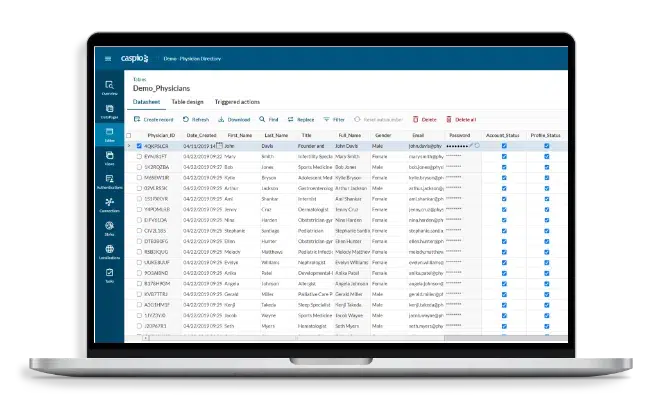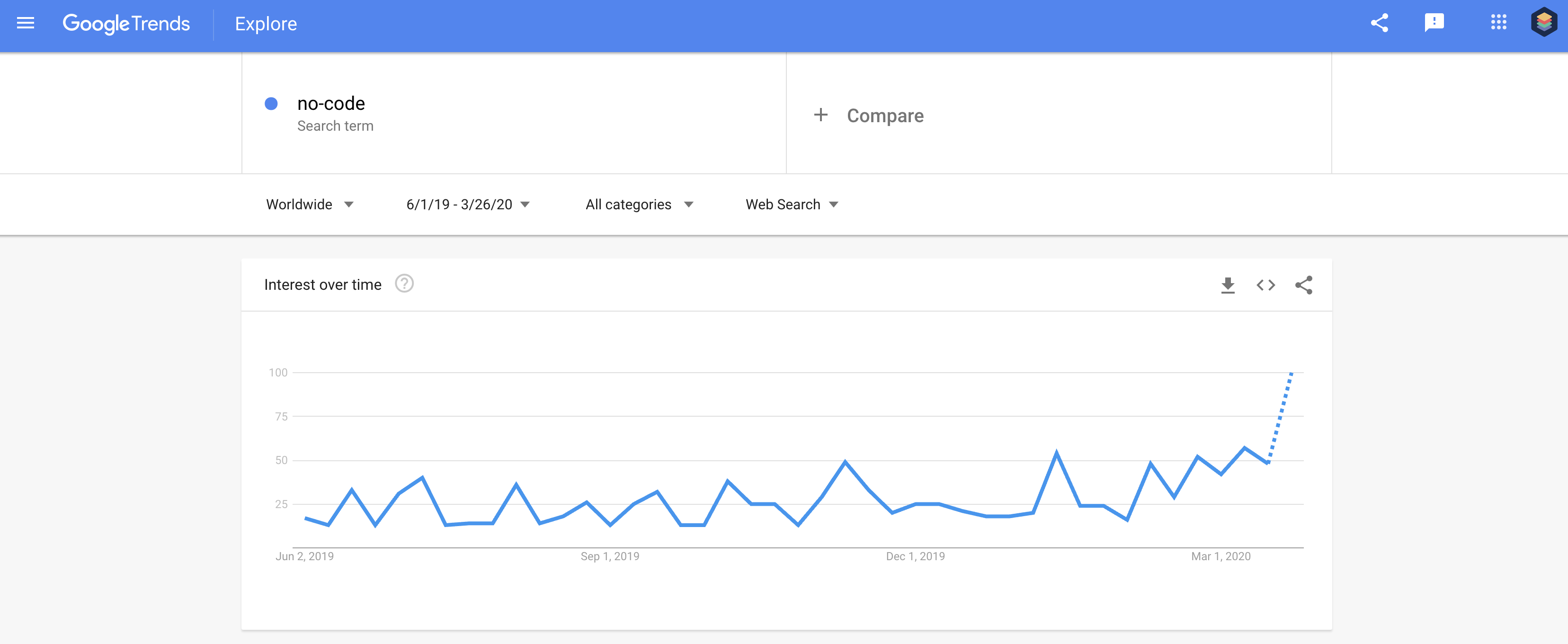Produce Open System Databases Quickly with the Best No-Code Equipment Available
Produce Open System Databases Quickly with the Best No-Code Equipment Available
Blog Article
Discover Exactly How Scalable Data Sources Can Be Utilized Without Coding to Improve Your Organization Workflow
In today's busy business setting, the capability to take care of and evaluate information efficiently is extremely important. Scalable databases, specifically when coupled with no-code remedies, provide a transformative technique that equips non-technical individuals to improve procedures. By employing tools that call for no coding know-how, companies can boost their functional abilities while decreasing dependancy on IT resources. Nonetheless, the real question hinges on recognizing just how these services can be customized to details business requirements and what possible difficulties may develop in their execution. Exploring these aspects can illuminate the path to operational excellence.
Understanding Scalable Data Sources
Scalable data sources are important for modern-day business operations, allowing companies to efficiently manage boosting quantities of data without giving up efficiency. These data sources are designed to grow and adjust to the transforming needs of a company, making sure that they can handle larger datasets and even more complicated questions as business needs develop.
Comprehending scalable data sources entails recognizing their two main types: vertical scaling and horizontal scaling. Upright scaling, or "scaling up," involves adding more power (CPU, RAM) to an existing server to improve performance. On the other hand, straight scaling, or "scaling out," entails including extra servers to disperse the tons, which usually results in greater flexibility and fault tolerance.
One more critical aspect is the architecture of scalable databases, which can be either relational or non-relational. Relational databases, such as MySQL and PostgreSQL, are structured and use SQL for questions, while non-relational data sources, like MongoDB and Cassandra, use more adaptability with unstructured data.
Eventually, comprehending scalable databases is vital for organizations intending to utilize information as a calculated possession, enabling them to remain competitive in an increasingly data-driven setting.

Benefits of No-Code Solutions
Unlocking the possibility of no-code remedies empowers services to simplify operations and enhance performance without the requirement for considerable programming understanding. These systems enable non-technical customers to create, customize, and handle data sources easily, thus democratizing accessibility to technology across teams.
One of the main advantages of no-code remedies is their speed of application. Services can rapidly release applications and automate procedures, significantly minimizing the moment invested in growth cycles. This dexterity enables organizations to respond immediately to market adjustments and consumer demands, cultivating an affordable edge.
Furthermore, no-code platforms decrease reliance on IT departments for everyday tasks, enabling technological groups to concentrate on even more complicated projects that need specialized skills. This shift not only optimizes resource allocation however likewise promotes development within the organization.
Cost-effectiveness is another benefit, as no-code options can decrease development and upkeep expenditures. By decreasing the need for coding competence, business can harness the capabilities of their existing labor force without the overhead of hiring additional personnel.
Popular No-Code Data Source Equipment
The increase of no-code services has actually caused the appearance of numerous data source tools that accommodate organizations looking for efficiency and ease of access. These tools encourage individuals with limited technological knowledge to produce, manage, and adjust databases seamlessly.

Caspio attracts attention for its ability to develop web applications without any type of coding. It enables companies to create durable databases and deploy applications quickly, providing to numerous sector requirements. Likewise, Knack offers straightforward user interfaces and effective data monitoring abilities, making it possible for companies to develop custom-made applications tailored to their process.

Use Cases in Business Procedures
Exactly how can services take advantage of database tools to enhance their procedures? Scalable data sources give organizations with powerful abilities to handle and evaluate data without the demand for considerable Read More Here coding expertise. These devices can simplify different company processes, inevitably causing improved efficiency and performance.
One famous use case is consumer connection management (CRM) Organizations can use scalable databases to track consumer communications, preferences, and responses, allowing personalized interaction and much better service. By systematizing this info, teams can work together better and react to client needs in real-time.
Another considerable application is stock monitoring. Business can employ no-code database devices to keep track of supply degrees, track deliveries, and forecast need. This ensures ideal inventory degrees, decreases waste, and decreases stockouts.
Furthermore, task management can take advantage of scalable databases by permitting teams to take care of tasks, due dates, and sources in an unified system. With real-time updates and data visualization, task managers can make educated choices.
Getting Began With Execution
Executing scalable databases in service procedures needs an organized approach to guarantee effective integration and use. The very first step is to carry out a comprehensive requirements analysis, identifying details business requirements, data types, and anticipated development patterns. This fundamental understanding will lead the option of the proper database service.
Following, select an easy to use, no-code data source system that straightens with your functional objectives. no-code. Many modern services supply instinctive user interfaces, permitting non-technical customers to take care of information effectively. After choosing a system, develop a clear information design that details just how information will certainly be organized, accessed, and maintained
Training is important; make sure that staff member are furnished with the needed skills to use the database. Consider offering workshops or tutorials to familiarize personnel with the system's capabilities.
Verdict
In verdict, the combination of scalable data sources with no-code solutions offers substantial benefits for company operations. These systems equip non-technical individuals to efficiently manage and evaluate data, facilitating boosted decision-making and partnership. By adopting devices hop over to these guys such as Airtable and Notion, companies can minimize and improve procedures reliance on IT sources. Eventually, leveraging these technologies can bring about improved performance and functional efficiency, placing services for sustained growth in a competitive landscape.
One popular no-code data source device is Airtable, which combines the performance of a spread sheet with the power of a database.Just how can businesses leverage database devices to enhance their operations? Services can utilize scalable databases to track customer interactions, choices, and responses, allowing tailored communication and you could try this out better service.Implementing scalable data sources in organization operations requires a structured technique to make certain successful assimilation and usage.In verdict, the assimilation of scalable databases through no-code services provides substantial advantages for service procedures.
Report this page